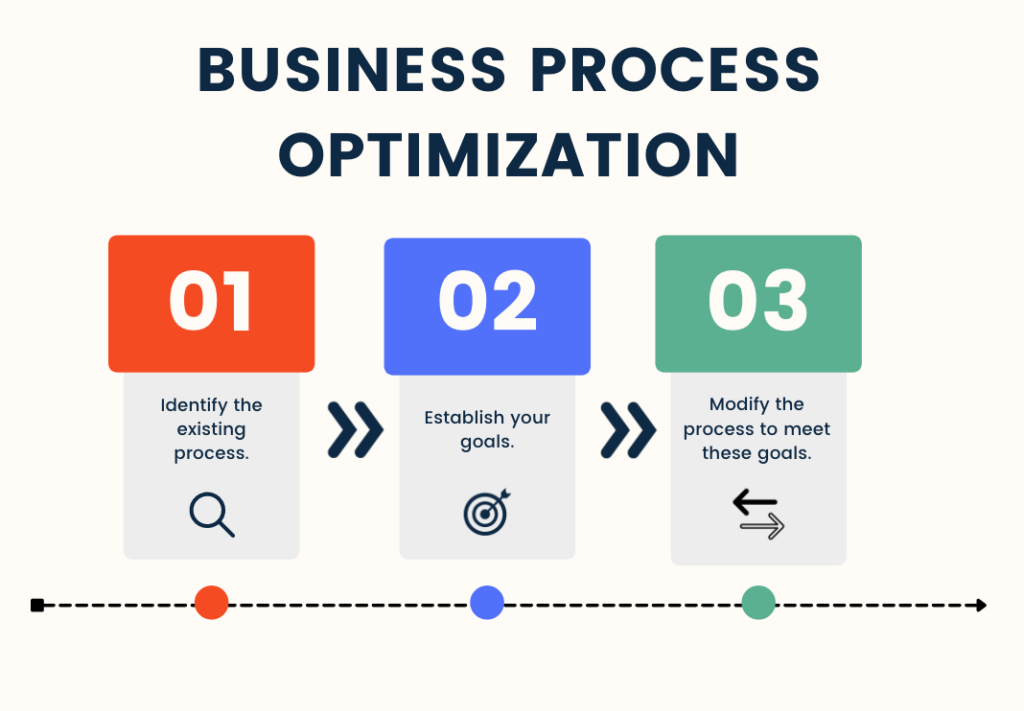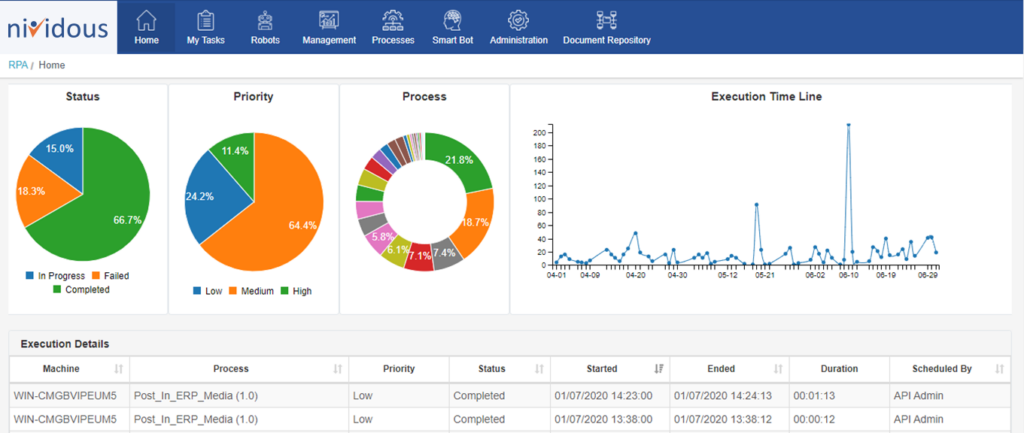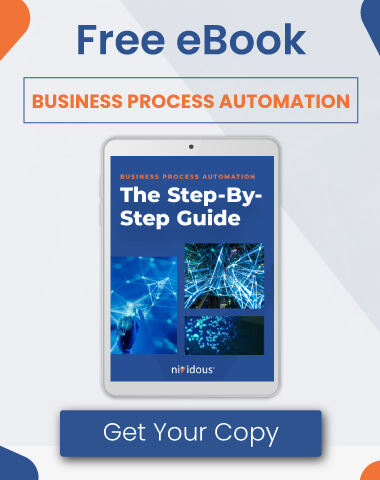Whatever you do at your business, you follow a process to get it done.
Paying invoices? That’s a process. Manufacturing a product? Also a process. Even designing better processes is itself a process: that’s business process optimization, to use the technical term.
Most processes are completed by teams, multiple employees working together—so by optimizing your process, you’ll also improve team efficiency in powerful ways. Before we discuss how process optimization can help build stronger teams, however, here’s a quick review of the practice.
Every business process is a series of steps, organized into a workflow, that achieves an established goal. Business process optimization breaks down into just three of these steps. Zoom in just a bit, and those steps can get pretty complicated—but here’s a process optimization strategy in broad strokes:
Step 1: Identify the existing process.
To make something better, you have to understand it. Business process optimization begins by documenting every step of your subject in detail, from the software you use to the keystrokes that make it happen—and the constitution of the team that gets the work done.
Step 2: Establish your goals.
How exactly do you want this process to improve? You might want to bring down costs or turnaround times; free staff from rote data-handling tasks; or cut error rates to zero. Whatever they are, make your goals clear, quantifiable, and achievable.
Step 3: Modify the process to meet these goals.
An optimization plan includes discrete changes that will improve the process. Maybe you can eliminate a few approvals, or create a new position to handle certain tasks (thereby altering your team). Or maybe you introduce intelligent automation, using digital tools to get work done, which frees staff for higher-value work along the way.
We’ve discussed process optimization frequently on this blog (for example, here and here). Now let’s explore all the ways process optimization supports teamwork, the core of any business larger than a sole proprietorship.
Struggling with ad-hoc, inefficient processes at your organization?
Reach out to learn how Nividous can help optimize and automate core business processes.
How Process Optimization Supports Collaboration
A single employee rarely completes all the steps in a complex business process. Multiple people must work together for success. That makes collaboration—teamwork—a core target for optimization.
In fact, process optimization can improve team effectiveness in a few concrete ways, including:
1. More efficient work hand-offs.
Teams share work; that’s what makes them teams. And when you share work, there’s always a moment of passing that work from one employee to another. That’s a work hand-off. For instance, take the example of invoice processing, which may look something like this:
- Accounts Payable (AP) Employee 1 receives a vendor’s invoice via email, and sends it to AP Employee 2.
- AP Employee 2 transcribes invoice data into the ERP, then notifies Manager 1 that the figures are ready for review.
- Manager 1 checks the work and sends it to Manager 2 for approval.
- Manager 2 approves payment on the invoice, sending it back to AP Employees 2.
- AP Employee 2 pays the vendor.
Every step requires a hand-off. Each of those hand-offs takes time and introduces potential errors. A process optimization specialist may notice that a smart automation solution could handle steps 1 through 3, significantly reducing these hand-offs (as well as rote work along the way).
- The digital automation platform could send invoice data straight to Manager 2 for approval; that’s one hand-off.
- Manager 2 could notify AP Employees 1 and 2 that the invoices are approved for payment; a second and final hand-off.
That optimization would reduce hand-offs by 250%, cutting down on errors, eliminating bottlenecks, and saving valuable time for the whole team.
Even without automation, as you document the process, you may notice that AP Employee 1 is just moving information; why not have invoices go straight to AP Employee 2, freeing that first staff member to focus on another process altogether?
To be clear, you can’t always minimize the number of handoffs. But process optimization is the practice of identifying where you can bring in these efficiency improvements—and there may be more opportunities than you think.
2. Better assignment of workforce roles.
In his 1975 classic The Mythical Man-Month, software engineer Fred Brooks Jr. pointed out the danger of scaling up your team in an effort to get a project done faster. (This is in the context of software development, but you may have experienced a similar dynamic in finance, manufacturing, healthcare—just about anywhere.) That led to a pithy observation known as Brooks’ Law.
Brooks’ Law: |
| “Adding manpower to a late software project makes it later.” |
Of course, nothing so generalized can apply to every business process. In fact, later engineers Tarek Abdel-Hamid and Stuart Madnick updated the law in their 1991 text Software Project Dynamics: An Integrated Approach, observing that “adding more people to a late project always makes it more costly, but it does not always cause it to be completed later” (their emphasis).
The point is, for many processes, more participants means more complexity. That rarely adds up to greater efficiency. During a process optimization project, look for roles that aren’t strictly necessary for success. These are roles that may create more value working on other processes.
You may also find that the opposite condition applies; process optimization may reveal new roles you need to create. Either way, a close look at your as-is process will help assign tasks to staff in ways that can both reduce costs and create greater workplace experiences, as staff begin to avoid frustrating and unnecessary labor. If your organization still relies on ad-hoc processes—developing methods as the need arises, without any comprehensive view of the total process—you’ll spot a lot of opportunities for improvements with process optimization.
3. Greater visibility for more effective teamwork.
In his studies of teamwork, Harvard social psychologist J. Richard Hackman identified five “enabling conditions,” organizational elements that correlate to more effective teamwork—including one he called “compelling direction.” For any team project, Hackman identified the compelling direction as:
“…a purpose that is clear, challenging, and consequential—and that focuses on the ends to be achieved rather than the means the team must use in pursuing them.”
Process optimization identifies the compelling direction of a given process. It shows the entire process from start to finish, so the end goal is never obscured, even during the distant first steps. With this end-to-end documentation in hand, you can provide full-spectrum visibility for everyone on the team—the condition of compelling direction that helps teams work better.
The Nividous platform makes this visibility the center of an end-to-end process automation system—and that’s not the only way it translates process optimization into significant, day-to-day operational improvements. Process optimization leads to a plan; the Nividous platform puts that plan into action.
The Nividous platform provides at-a-glance performance data for automated business processes.
Process Optimization For Teams: The Role Of Intelligent Automation
Intelligent automation combines advanced digital tools like Artificial Intelligence (AI), Robotic Process Automation (RPA), and Business Process Management (BPM) into a single, end-to-end digital workflow. The RPA bots complete discrete tasks, moving data from one system to another, for instance. They may use AI like computer vision or Natural Language Processing (NLP), to interpret, categorize, and process all sorts of documents. But that’s automation on the task level.
To achieve full, end-to-end automation, the system must also orchestrate tasks between RPA bots and human participants. It must maintain a coherent workflow, including all the steps within the process. And it must track data the whole way, providing ongoing opportunities for continuous improvement. The Nividous platform does all these things and more, enabling true end-to-end process automation.
But it’s useless to automate an inefficient process; that just scales inefficiency. That’s why every implementation of intelligent automation with Nividous begins with a comprehensive process optimization stage. Our analysts document your processes and identify the optimizations before we move to the automation stage—providing clear, measurable improvements on the Key Performance Indicators (KPIs) that matter most to you.
Intelligent automation is a powerful way to realize the benefits of process optimization—and that includes more effective teamwork across the organization.
Ready to see how it works?
Request a free, personalized demo of the Nividous platform.







![Business Process Automation: Your Complete Guide [2023]](https://nividous.com/wp-content/uploads/2023/09/Business-Process-Automation-Your-Complete-Guide-2023-Blog-Feature.webp)